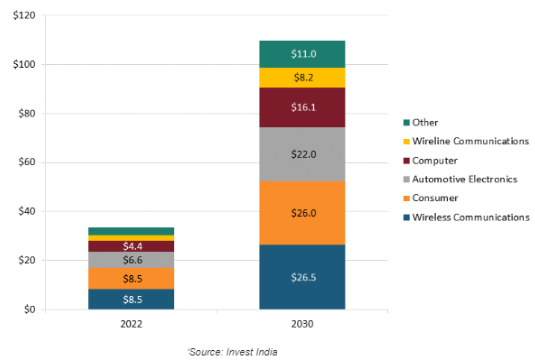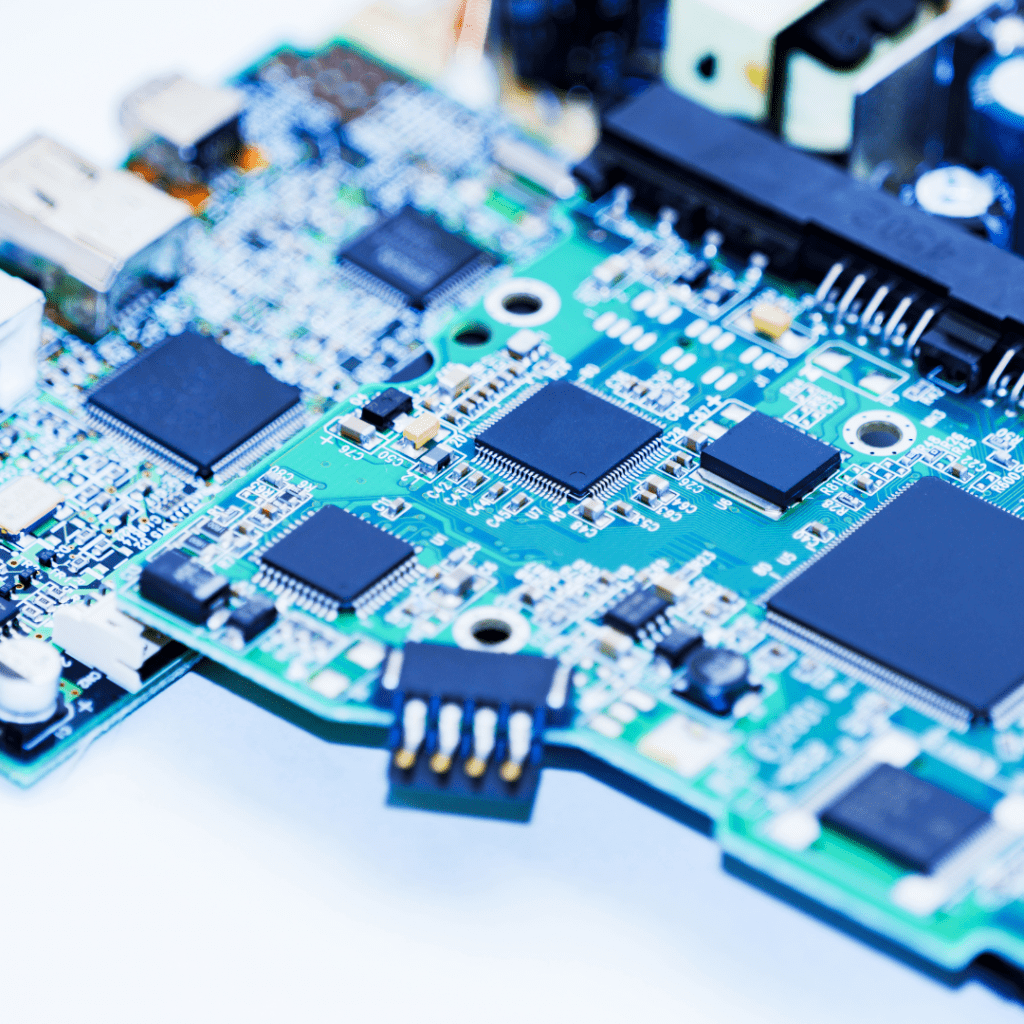Once a modest player, India’s semiconductor industry is undergoing a metamorphosis, which is rather a quick one. The mega announcement by MoS IT Shri Rajeev Chandrasekhar about Two full-fledged semiconductor fabrication plants soon coming up in India entailing multi-billion dollar investment is exciting.
For decades, the Indian semiconductor industry was a quiet player on the global stage, reliant on imports and struggling to gain a foothold. But a silent revolution is unfolding, fueled by ambition, government initiatives, and global tech giants setting their sights on this burgeoning market.
This edition of “The People Weekly” will delve into the evolution, current growth, and prospects of India’s semiconductor industry, painting a picture of technological advancement, potential job creation and economic transformation.
Indian Semiconductor Industry: Past
Semiconductors are arguably one of the most important inventions of the modern era, with their relevance permeating almost every aspect of our lives. Semiconductors are the brains behind modern electronics. They act as the “switches” and “amplifiers” in electronic circuits, processing information and enabling devices to function. From computers and smartphones to medical equipment and cars, semiconductors are essential components.
And yet, the Indian semiconductor industry was just a nascent player for many years with a focus on basic components like transistors and diodes, with limited domestic production and dependence on imports. A few major domestic players from the 1950s to 1990s were SCL (Semiconductor Corporation of India ) and ITL. The 2000s ushered in a new era of liberalization, attracting foreign investments and paving the way for the establishment of fabrication units (fabs) and design houses.
However, the Indian industry continued to be dominated by Taiwan, China, Singapore and South Korea with over 95% of semiconductors imported from these countries. The pandemic however disrupted the supply chain, especially with lockdowns and production disruptions in the key manufacturers of semiconductors. As a result, there was a huge shortage of semiconductors in the market. Many allied and dependent industries were affected. Over 4 Lakh pending orders yet to be delivered by Maruti Suzuki due to chip shortage is one such example.
The Indian government recognized the strategic importance of a robust domestic semiconductor industry and launched initiatives like the “Make in India” campaign and the “India Semiconductor Mission (ISM)”. These initiatives aimed to attract global players, incentivize domestic production and develop a self-sufficient ecosystem.
PRESENT LANDSCAPE: FERTILE LAND FOR GROWTH
Today, India’s semiconductor market stands at an estimated $15 billion and is expected to reach US$ 55 billion by 2026, with smartphones and wearables, automotive components, and computers and data storage accounting for more than 60% of the market. This growth is fueled by Government Support Schemes like the Semiconductor Policy and the Design Linked Incentive (DLI) offer financial assistance and tax breaks to attract investments and boost domestic production.
India’s Semiconductor market 2022(actual) and 2030(forecast in billion USD)

Major players like Intel, TSMC, and Micron are setting up fabs, while domestic players like ISMC and Vedanta are also making significant investments. The focus areas are diverse, encompassing chip design, analog and mixed-signal chips, sensor technologies, and power electronics. OSAT(Outsourced Semiconductor Assembly and Testing ) and ATMP(Assembly, Test, Mark, Pack) are the two areas which are good starting points for the Indian Semiconductor industry as per Satya Gupta, president of the VLSI society in India.
Some of the noteworthy developments presently are
- Rs 6903 Cr budgetary allocation for the semiconductor industry
- Semicon India Programme with an outlay of INR 76,000 crore for the establishment of Semiconductor and Display Fabs
- US Chipmaker AMD opens its largest R&D center in Bengaluru
- US-based semiconductor manufacturer Micron India plant to roll out first chip by Dec 2024 as per reports from DAVOS 2024
- Tata Group’s proposal to set up a chip fabrication facility in Dholera is exciting.
- South Korean PCB manufacturer Simmtech has signed an MOU with the Gujarat government to invest Rs 1250 Cr to set up operations.
Future
The future of India’s semiconductor industry is brimming with potential. Growing demand for electronics, driven by AI, IoT, and 5G technologies, presents a massive opportunity. Fab expansion promises increased domestic production, potentially making India self-sufficient in certain chip segments.
The industry is expected to be a major job creator, offering over 1 million opportunities in design, manufacturing, sales, and research & development. Engineers, technicians, business development professionals, and researchers will be in high demand, ushering in a new era of skilled workforce development. Jaya Jagadish, Country Head of AMD India, and Chairperson of the Semicon Talent Building Committee (TBC) has opined that the Indian semiconductor industry will generate 12 lakh jobs in various positions.
Job creation estimates:
- 100,000 semiconductor design engineers in the next 5 years
- 120,000 engineers, operators, and technicians
- 1.2 million skilled workers across various sectors
Types of jobs created
- Semiconductor design engineers: Crucial for chip development and innovation.
- Manufacturing engineers and technicians: Involved in the fabrication, testing, and assembly of chips.
- Research and development scientists: Focus on developing new technologies and processes.
- Operators and technicians: Responsible for maintaining and operating manufacturing equipment.
- Supporting roles: Jobs in logistics, supply chain management, and equipment manufacturing will also see growth.
PeopleLogic Opinion
The future of the semiconductor industry in India is exciting and full of potential but also comes with its share of challenges. While the growing market, governmental support, setting up of fabs and shifting of focus beyond basic chips to speciality areas like power management, sensors and analog devices have presented golden opportunities, the journey is not without its challenges.
Some of the challenges are
- Competition: Established players like Taiwan and South Korea have a strong head start with advanced technology and economies of scale.
- Talent shortage: India needs to bridge the gap in skilled workforce, especially for advanced chip design and fabrication. Sensing this skill gap, the Electronics and IT Ministry aims to train over 85,000 engineers on chip design for the next 5 years.
- Infrastructure: Building a robust ecosystem with reliable power, water, and communication infrastructure is crucial.
- Financial viability: Setting up fabs is capital-intensive, and attracting long-term investments requires a supportive policy environment.
The Indian semiconductor industry, though nascent, boasts immense growth potential fueled by domestic demand and government initiatives. While currently heavily reliant on imports, ambitious plans like the India Semiconductor Mission and increased funding pave the way for domestic chip manufacturing and design capabilities.
While plants and manufacturing facilities are being set up, as pointed out earlier the industry will face a talent acquisition war mainly due to a lack of good talent. PeopleLogic, with its expertise in talent acquisition and AI-powered solutions, can play a crucial role in this growth trajectory. Leveraging our deep understanding of the industry and talent landscape, PeopleLogic can connect global semiconductor players with the right candidates, accelerating India’s journey towards becoming a key player in the global semiconductor ecosystem.






